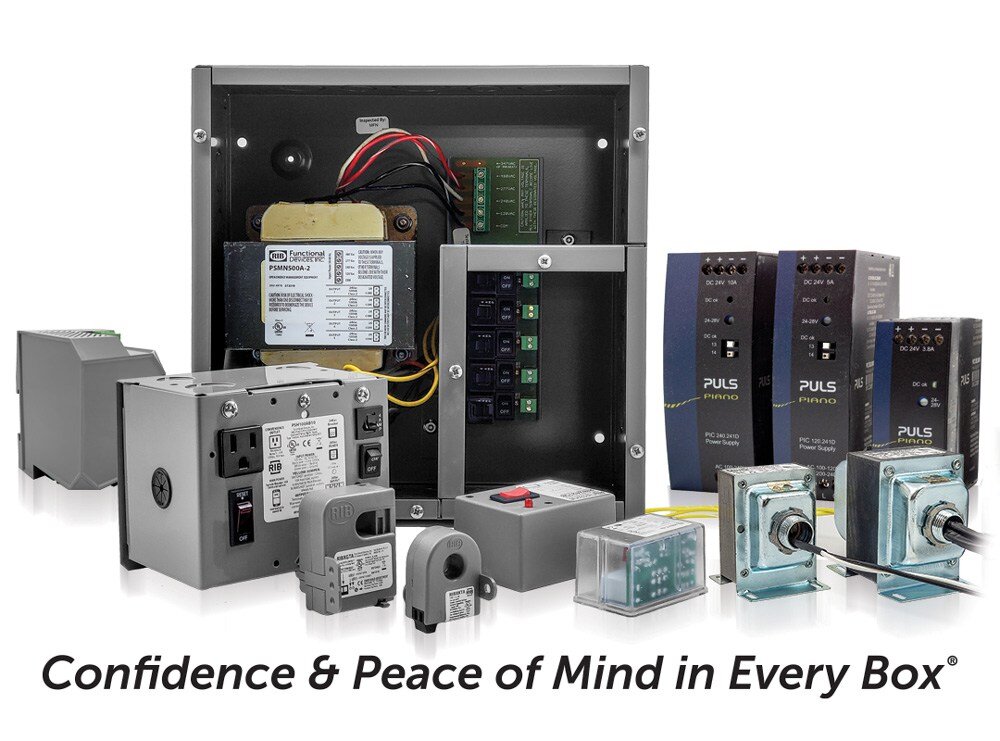With sustainability initiatives, evolving technologies, and ever-rising operating costs, you’ll be hard-pressed to find anyone who would argue with you about the importance of energy efficiency in industrial, commercial, and residential settings. Trying to lower your power consumption is good for your wallet and the planet.
To improve energy efficiency in commercial settings, you must first understand a facility’s energy usage trends. You need a measuring stick, so to speak.
Current sensors are the answer to getting the real-time data you need to make informed decisions about efficiency and functionality. Let’s explore current sensors and why they’re essential to many industries, such as renewable energy systems and data centers.
Functional Devices is all about improving efficiency and functionality in commercial settings (hence our name!). Our current sensors come preassembled for immediate use, saving you time and money. Explore the options and send any questions our way.
How Do Current Sensors Monitor Energy Usage?
A current sensor is a device that detects and measures an electrical current flowing through a circuit. It then translates the current into a quantifiable output, like voltages or digital signals. There are many different ways of categorizing current sensors (e.g., split/solid, working principle, etc.), but we’ll touch on three of the most common types for this post.

With some knowledge of scientific principles and formulas, facility managers can use all three types to measure energy usage. But why does monitoring power consumption matter so much?
The Benefits of Monitoring Power Consumption
We’ve already discussed the importance of power monitoring for improving efficiency and functionality. Let’s explore more about what that means.
Excessive or inefficient energy use can have significant environmental impacts (like air pollution and resource depletion) and result in higher operating costs for your facility. Real-time monitoring with current sensors provides actionable data that you can use to increase cost savings, improve equipment longevity, conserve energy, and further sustainability initiatives.
Utilizing current sensors also makes implementing an efficient building automation system (BAS) much easier, as you’ll be able to identify inefficiencies and fine-tune settings continuously.
Key Applications of Current Sensors
To determine which type of current sensor is best for your application, consider contacting the product manufacturer. They’ll be able to guide you through all the details of which one to use, how to calculate measurements, installation processes, and more.
Broadly speaking, here are some key applications of current sensors and what they help accomplish:
- Industrial sector. Optimizing machinery and preventing downtime
- Commercial buildings. Managing HVAC systems and lighting controls
- Automation systems. Balancing loads and identifying inefficiencies
- Renewable energy systems. Monitoring solar panel performance
- Data centers. Detecting faults, balancing loads, and aiding capacity planning
- Residential use. Integrating a smart home and improving energy conservation
How to Leverage Current Sensors for Energy Monitoring
To leverage current sensors for smarter, more efficient power management, choose the right type of sensor for your specific needs. Here are some questions to consider:
- Do you have a high- or low-current system to measure?
- Do you need to ensure the sensor is isolated from critical equipment?
- Do you need a high level of accuracy?
- Do you need to consider the heat given off by specific sensors?
- Are you retrofitting a sensor to an existing setup?
- What about other installation considerations — placement, calibration, and connectivity?
- Will you integrate current sensors with IoT or smart monitoring systems?
If you’re new to current sensors, these questions might seem overwhelming. That’s why we encourage you to contact the manufacturer with any questions!
Stay Efficient With Functional Devices
Implement energy monitoring with current sensors to improve cost savings and sustainability, and maintain efficiency and functionality. They’ll give you the real-time data you need to make data-driven decisions.
Here at Functional Devices, we’re dedicated to helping you leverage efficient components for better energy management. Our current sensors accommodate a wide range of current detection thresholds, making them compatible with many electrical systems. Explore our product line and contact us to learn more. Our engineers are happy to chat!
About Functional Devices, Inc.

Leaders in the Industry
The world was a very different place in 1969, when Functional Devices, Inc. was founded by engineer and electronics enthusiast Albert Rittmann, but our commitment to evolution and versatility has allowed us to remain a key player in the building automation and lighting controls industry for over 55 years.
Today, as we embrace emerging technology and lean into the future of building automation, our products are still manufactured in the USA with global materials, and we are still committed to our mission of enhancing lives in buildings and beyond. Back in 1969, Albert could never have predicted the technological advances we live with today, but with the groundwork he laid and the vision of his successors, Functional Devices has adapted and grown into a company that can handle anything.
